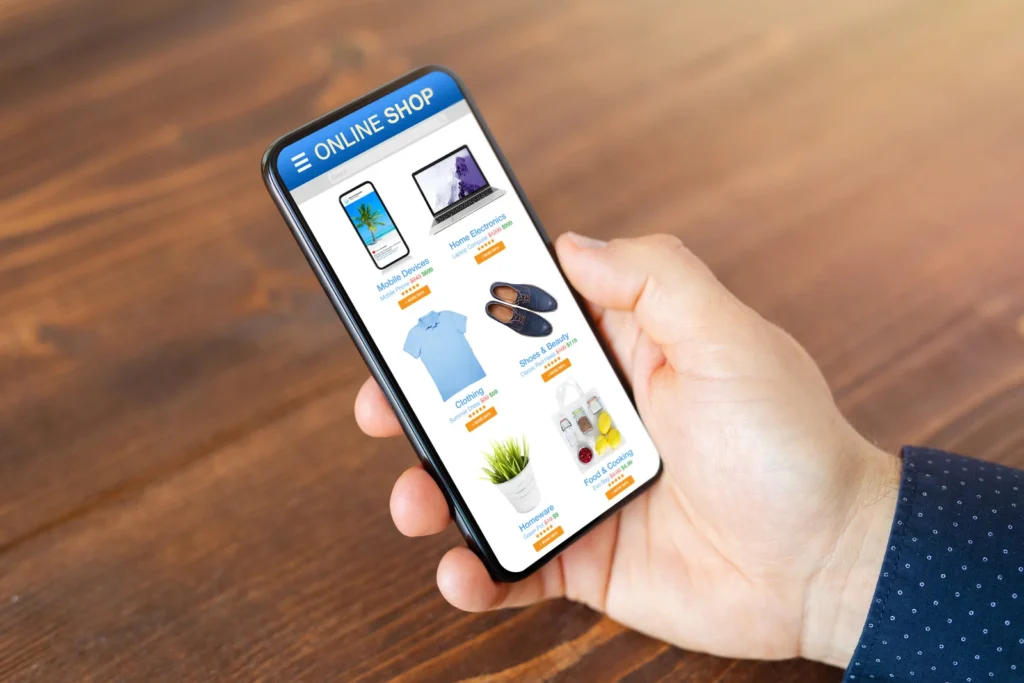The Silent Conversion Killer: A Poor Mobile Experience
Every day, potential customers visit your store only to leave frustrated. They don’t complain. They don’t ask for help. They just vanish… and buy from your competitor instead.
You’ve spent months perfecting your store. Your product images are stunning, your descriptions are on point, and your checkout process is smooth. But there’s one major issue: your site isn’t fully optimized for mobile users.
In 2025, mobile e-commerce dominates the market, with over 75% of all online sales happening on smartphones (Statista). If your store isn’t mobile-friendly, you’re not just frustrating users—you’re actively losing customers. Research shows that 57% of users won’t recommend a business with a poorly designed mobile site (Google).
So, what’s holding your mobile experience back? And more importantly, how can you fix it?
Why Your Store Might Not Be Mobile-Optimized
Your ecom store is a powerful ecommerce platform, but that doesn’t mean your store is automatically optimized for mobile. Here are some of the most common pitfalls:
1. Slow Load Times
A mobile user expects instant access. If your site takes more than 3 seconds to load, 53% of visitors will leave (Google).
Fix It:
- Compress images using WebP format.
- Use lazy loading to prevent unnecessary image loading.
- Minify CSS and JavaScript files.
2. Non-Responsive Design
A site that looks great on desktop but breaks on mobile will drive users away. More than 60% of users abandon sites that don’t scale properly on their phones.
Fix It:
- Use a mobile-responsive ecom store theme.
- Test your site using Google’s Mobile-Friendly Test.
- Ensure all buttons and navigation elements are tap-friendly.
3. Clunky Navigation
If users can’t easily browse your site, they’ll leave and buy elsewhere. Poor navigation is a top reason for abandoned carts.
Fix It:
- Use a sticky menu for easy navigation.
- Simplify your categories and filters.
- Make sure your search bar is always visible.
4. Complicated Checkout Process
Mobile shoppers expect a frictionless checkout experience. An extra step or unnecessary form field can drop conversions by up to 30% (Baymard Institute).
Fix It:
- Enable one-click checkout.
- Offer multiple payment options (Apple Pay, Google Pay, PayPal).
- Auto-fill shipping and billing information where possible.
5. Pop-Ups That Interrupt the Shopping Experience
Pop-ups can work on desktop, but on mobile, they can ruin the experience by covering important content.
Fix It:
- Use exit-intent pop-ups instead of immediate ones.
- Ensure pop-ups are easy to close on small screens.
- Keep pop-ups minimal and avoid disrupting the checkout process.
6. Lack of Mobile-Specific SEO
Google prioritizes mobile-first indexing, meaning if your mobile site isn’t optimized, your rankings (and traffic) will suffer.
Fix It:
- Use structured data to enhance search visibility.
- Optimize for voice search (think conversational keywords).
- Implement Accelerated Mobile Pages (AMP) for lightning-fast load times.
How to Make Your Store 100% Mobile-Friendly
If you want to maximize sales, you need a seamless mobile experience. Here’s your step-by-step action plan:
Step 1: Test Your Mobile Performance
Use Google PageSpeed Insights and Google Mobile-Friendly Test to analyze your current setup.
Step 2: Choose a Mobile-Optimized Theme
Your ecom store offers responsive themes, but not all are created equal. Pick a fast, lightweight theme designed for mobile-first shopping.
Step 3: Optimize Your Images
- Convert all images to WebP format.
- Enable lazy loading to reduce initial page load times.
- Use CDN services like Cloudflare to serve images faster.
Step 4: Simplify Mobile Navigation
- Add a sticky header for quick navigation.
- Use mobile-friendly dropdown menus.
- Make buttons at least 44px by 44px for easy tapping.
Step 5: Streamline Checkout
- Enable one-click checkout for returning customers.
- Reduce form fields to only essential information.
- Accept mobile wallets like Google Pay and Apple Pay.
Step 6: Reduce Unnecessary Scripts
- Remove unused ecom store apps and third-party scripts.
- Use Google Tag Manager to consolidate tracking codes.
- Minify JavaScript and CSS files.
Step 7: Improve Mobile SEO
- Use mobile-friendly keywords (e.g., “best running shoes near me”).
- Optimize for voice search with natural-sounding queries.
- Implement AMP for lightning-fast load speed
The Bottom Line: Mobile Optimization = Higher Conversions
A slow, clunky, or confusing mobile experience isn’t just annoying—it’s costing you sales. If your store isn’t fully optimized for mobile in 2025, you’re leaving money on the table.
By focusing on speed, navigation, checkout simplicity, and SEO, you can create a seamless experience that keeps mobile shoppers engaged and boosts your conversion rates.
Ready to test your store’s mobile performance? Run a Google PageSpeed test now and start optimizing your ecom store today!



